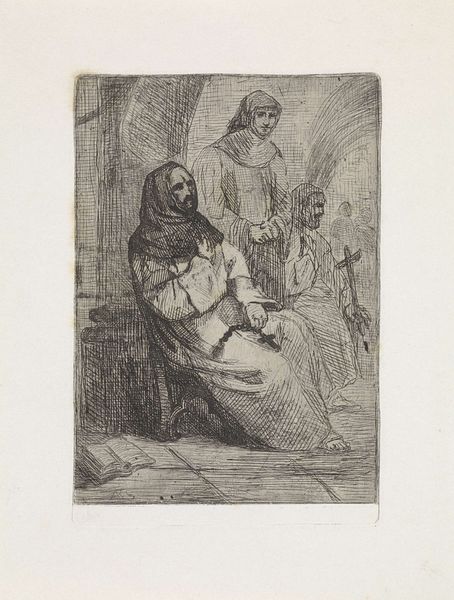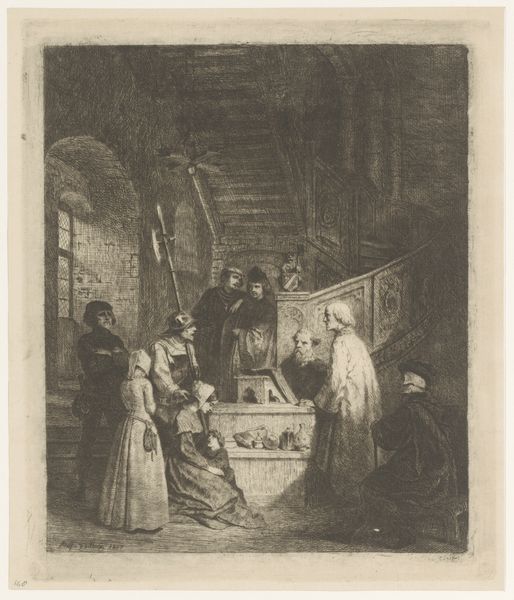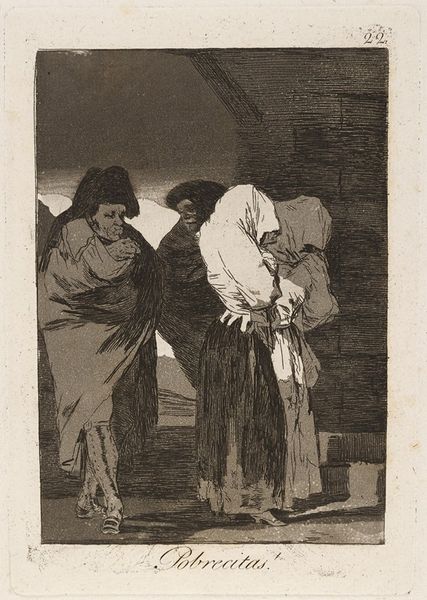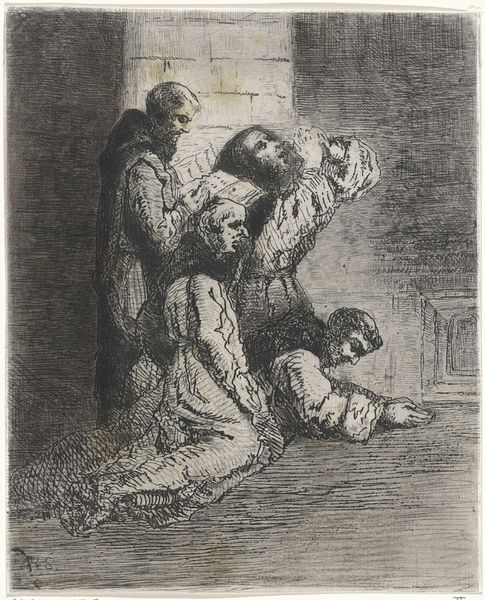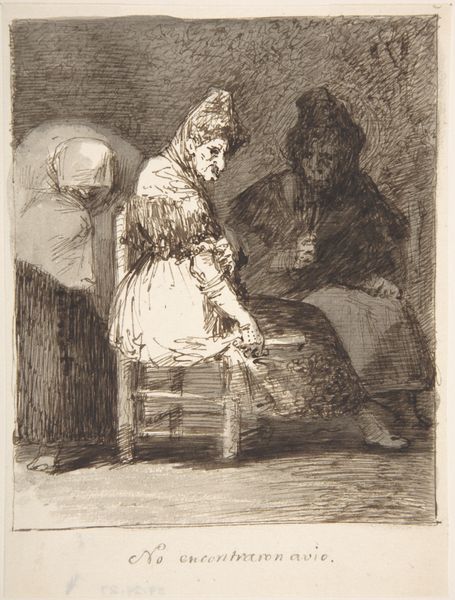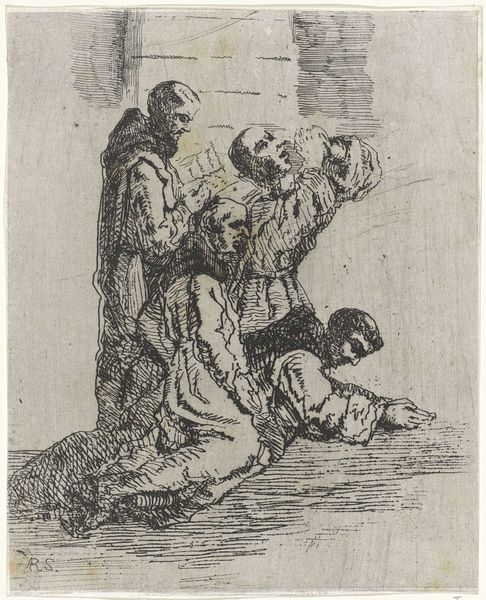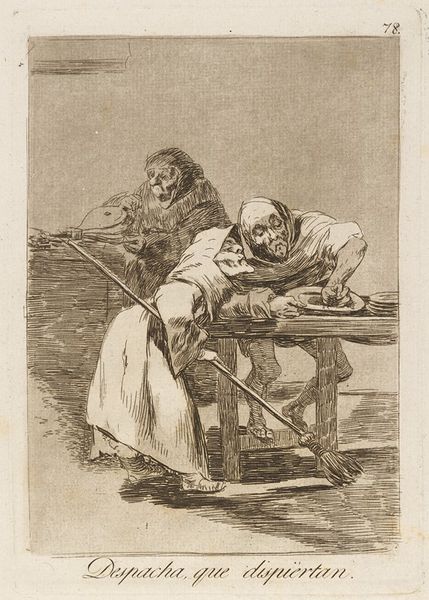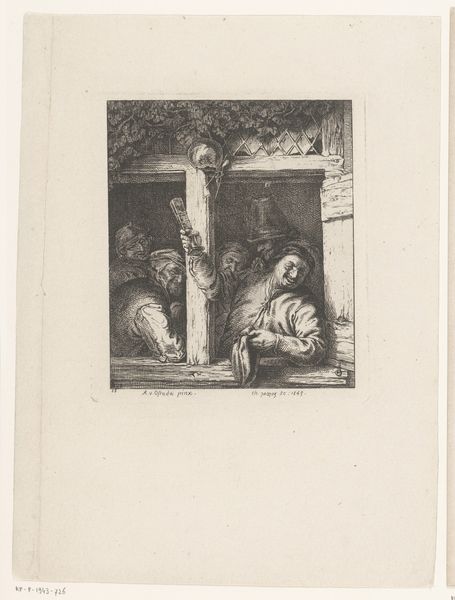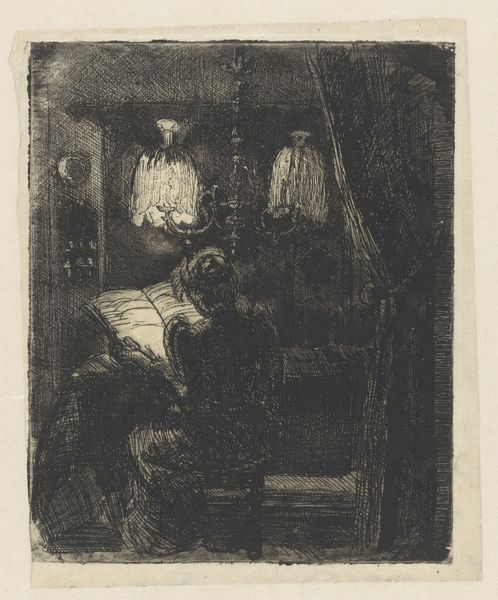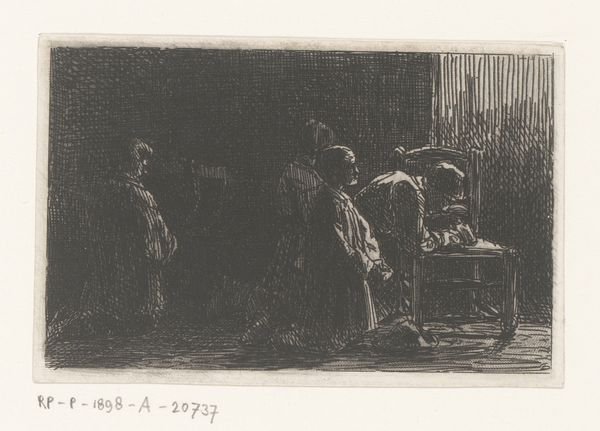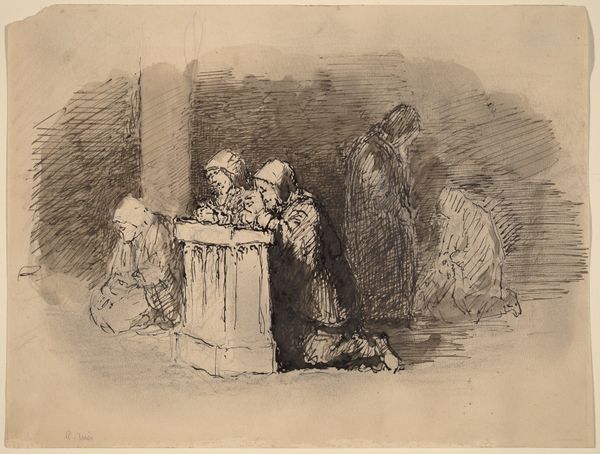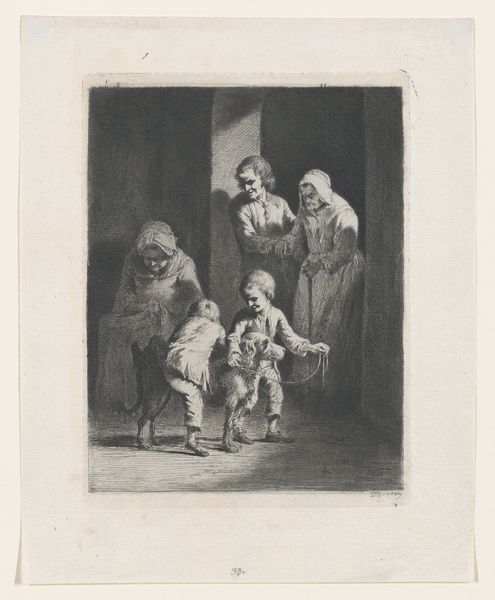
They Centainly Can Use It ("Bien lo han menester") 1807 - 1845
0:00
0:00
drawing, print, ink, pen
#
drawing
#
narrative-art
# print
#
figuration
#
ink
#
pencil drawing
#
romanticism
#
line
#
pen
#
genre-painting
Dimensions: 7-1/4 x 5-1/8 in. (18.4 x 13.0 cm)
Copyright: Public Domain
Curator: What strikes me immediately is the oppressive weight of this scene, the pen and ink seeming to mimic the somber atmosphere. Editor: We're looking at "They Certainly Can Use It ("Bien lo han menester")", a drawing dating from 1807 to 1845 by Leonardo Alenza, currently held at the Metropolitan Museum of Art. The medium is listed as drawing, print, and ink, indicating an iterative, reproducible process tied to wider consumption, possibly aimed at social commentary. Curator: Commentary indeed. It's the faces, isn’t it? Their desperation, etched onto paper with these frantic lines. Almost a caricature, a cruel little glimpse into their world. Look at the way they huddle. Are they praying, mourning, or just defeated? Editor: The huddled figures invite consideration. Is this about spiritual devotion or a condemnation of socio-economic realities reflected through the cost of artistic materials and accessibility of printmaking techniques, influencing distribution to various social classes? Alenza appears preoccupied with distribution beyond the elite. Curator: Oh, absolutely. And that almost mocking title written in script: “Bien lo han menester,” as if their need is glaringly obvious. A dark irony seeps through every shade. You know, that single light from what looks like a solitary candle… a beacon of false hope, maybe? Or maybe genuine solace; I keep changing my mind. Editor: I understand. The strategic deployment of light sources to amplify emotional response and further accessibility across different viewerships could signal democratization of subject matter. The material reality meets thematic choices—are they reflective of specific contemporary labor exploitation? Curator: Mmm, valid points. Still, there's such stark humanity embedded. Forget the artist’s intention for a moment. What's the story they are weaving in your mind, given your framework of reference? This piece leaves a grim aftertaste of the poverty back then. I wonder if he sold many copies? Editor: What truly resonates here isn't mere representation, but also how materiality becomes intrinsically bound with collective sorrow across varied consumption practices from wealthy collectors down low-end public forums. It all makes me question authorship. Curator: In the end, it’s about those desperate souls. They still stare out at us across time, from within these aged lines and layered shades. Isn’t that something? Editor: Something compelling indeed; where distribution challenges existing hierarchies whilst simultaneously cementing socio-economic status differentials based entirely upon engagement opportunities…
Comments
No comments
Be the first to comment and join the conversation on the ultimate creative platform.
